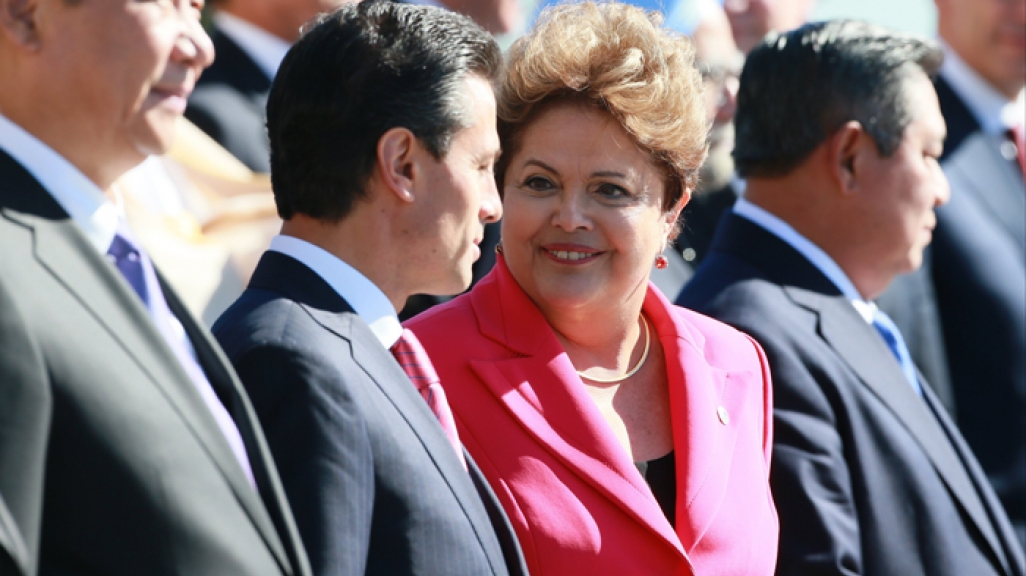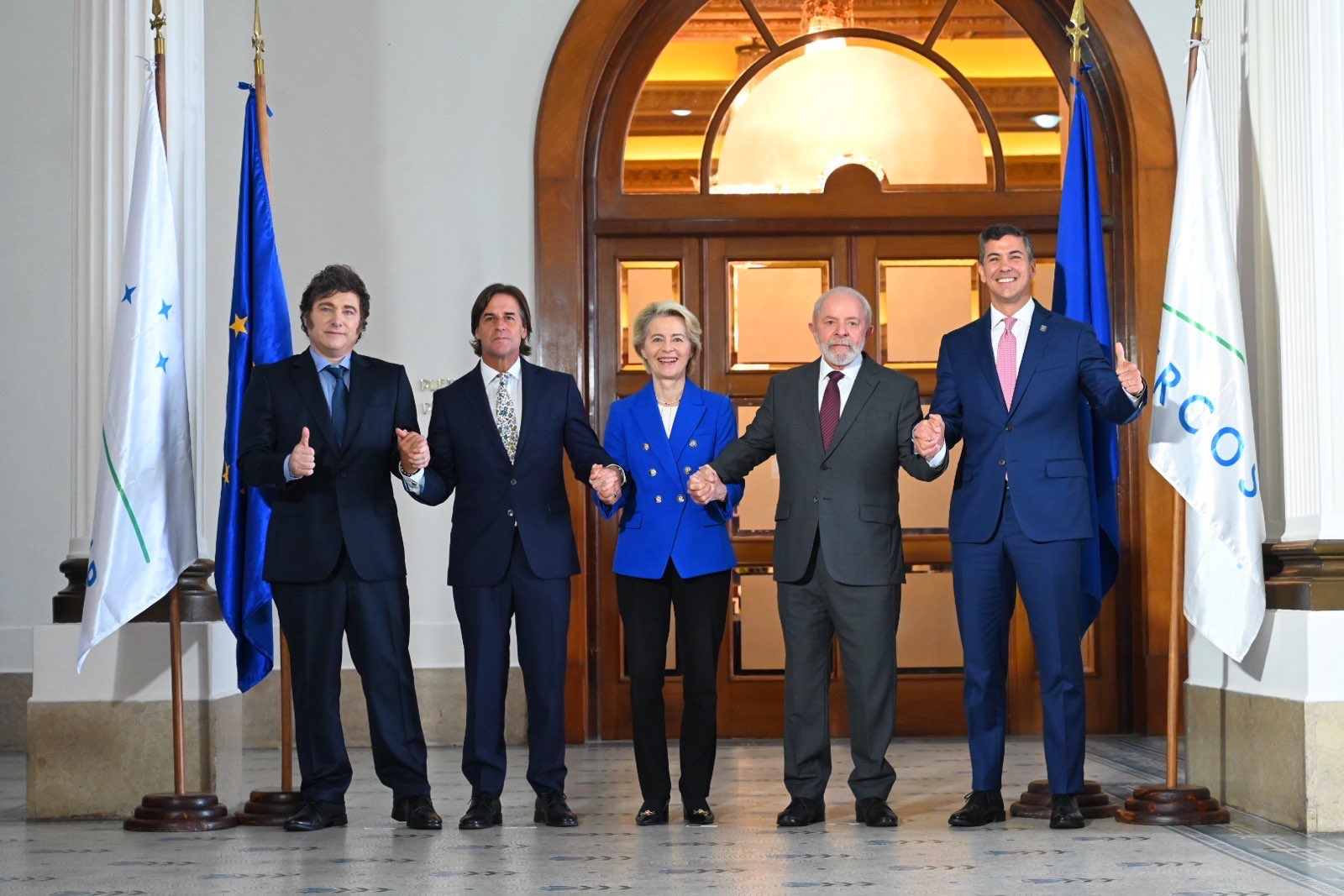The Tequila-Caipirinha Axis: Rousseff Visits Mexico
The Tequila-Caipirinha Axis: Rousseff Visits Mexico
Two months after an important bilateral auto deal, the Brazilian president leaves Mexico with new commercial agreements in hand.
Updated May 27, 2015 - When Brazilian President Dilma Rousseff paid a visit to her Mexican counterpart Enrique Peña Nieto this week, the two signed agreements at a time when their countries’ economies could each use a leg up. Rousseff, president of Latin America’s biggest economy, headed to Mexico, the region’s second largest, for her first state visit with her homologue there, as well as the country’s Congress. In an interview with Mexican daily La Jornada ahead of her Monday departure, Rousseff said the trip “opens a new chapter in our relations” that could give rise to a “tequila-caipirinha axis.” Meanwhile, Brazilian outlet Folha de São Paulo interviewed Peña Nieto via email; the Mexican head of state, like Rousseff, forecast commercial and investment agreements during the meetings. Accords would build on March’s crucial automotive deal that, according to Peña Nieto, accounts for 46 percent of bilateral transactions.
A visit in challenging times
The heads of state of the two Latin America giants came together at a moment that’s not without its economic challenges. International Monetary Fund (IMF) projections indicate that Brazil’s economy could shrink by 1 percent in 2015. Unemployment was up in the first quarter of the year and, through the first week of May, year-on-year daily trade rates were down 16 percent.
The scenario may look rosier for Mexico, where non-oil exports rose 6.2 percent in the first quarter and which the IMF forecasts will see GDP growth of 3 percent. But on May 21, the Mexican government made cuts to its own growth projections for the year—down a whole percentage point to between 2.2 and 3.2 percent. In fact, first-quarter growth stood at a mere 0.4 percent. On the same day, Mexican Finance Secretary Luis Videgaray noted a handful of hurdles for Mexico and emerging economies overall: the oil-price drop, U.S. monetary policy and volatility in advanced economies, and dwindling hopes for global economic growth.
On top of challenging economic scenarios, both presidents have seen their administrations dogged by scandal and flagging public support. Rousseff’s approval ratings hit a low of 13 percent in April. A March Reforma poll has Peña Nieto’s approval holding steady since December at 39 percent—the lowest rate for a Mexican president since the economic turbulence of the mid-1990s.
Building on an auto agreement
Rousseff, along with a Brazilian business delegation, makes the trip to Mexico City less than three months after Brazil and Mexico maintained an automobile trade deal that kept quotas in place for how many tariff-free automobiles each country can import from the other. But the agreement was not without some bumps along the way.
The automobile industry has been a bright spot for the Mexican economy, with light car and truck production up 13.6 percent in the first quarter of the year and more than 80 percent of cars made destined for export. Major automakers are also taking advantage of Mexico’s relatively low wages and free-trade pacts with more than 40 countries by making multibillion-dollar investments in new factories there, boosting the country’s auto-making industry. “The Mexican auto industry is coming of age,” an IHS Automotive analyst told the Los Angeles Times in April.
All this good news for Mexico isn’t necessarily a boon for Brazil. Last year, Mexico overtook Brazil as the world’s eighth-largest producer of automobiles, with the former’s production growing by more than 10 percent while the latter’s shrank by over 15 percent—and Brazilian auto exports were down by almost 41 percent overall. When it comes to cars and auto parts, Brazil runs a $1.2 billion trade deficit with Mexico.
The latest auto pact stems from a 2002 Mexico-Mercosur agreement. Then, when the two countries came to an accord on automobile trades a decade later, Mexican car exports to Brazil were soaring, thanks in part to a free-trade system in place from 2011. Clearly Brazil was not happy with the arrangement, so in 2012 Mexico agreed to the quota for auto exports to Brazil, as well as an increase in the percentage of locally produced parts. Those quotas were set to be temporary and expire in March 2015, but by then Brazil had an overall trade deficit of $1.7 billion with Mexico and the two countries opted to extend the quota arrangement until 2019. Time will tell if Brazil will agree to a free-trade arrangement at that point.
Building on growing economic ties
Looking beyond cars, agreements forged by the two leaders during Dilma’s visit could mean a great deal to Latin America’s economy, given that Brazil and Mexico together account for nearly two-thirds of the region’s GDP. Brazil is Mexico’s primary trading partner in Latin America, and bilateral trade grew 475 percent over the past 20 years to $9.2 billion last year. “It is a good trade [volume], but small for the size of the economies,” said Brazil’s Ambassador to Mexico Marcos Leal Raposo Lopes in an interview with Rio Times.
New deals signed by the two leaders this week seek to boost those numbers, setting a goal of doubling bilateral commerce within a decade. They plan to do so by building on an existing trade pact called ACE 53, boosting the number of products covered in that accord from roughly 800 to over 6,000. In addition to industrial and agricultural goods, the expanded agreement could cover services, technology, and intellectual property. On top of that, the two leaders inked agreements on tourism and environmental cooperation, while Rousseff hinted at energy cooperation, saying that Mexican state oil firm Pemex “would be quite welcome in Brazil.”
Rousseff’s trip also led to an agreement on investment cooperation. Currently, Mexico invests far more in Brazil than the other way around: Globo reports that Mexican foreign direct investment in Brazil amounts to $23 billion annually, while Brazil invests just $2 billion in the North American country.
“We’ve sown a path and built bridges for the greater integration of our economies,” said Peña Nieto of the accords reached during his Brazilian counterpart’s visit. He also pointed out that he and Rousseff signed a deal recognizing tequila and cachaça as products of, respectively, Mexico and Brazil.









